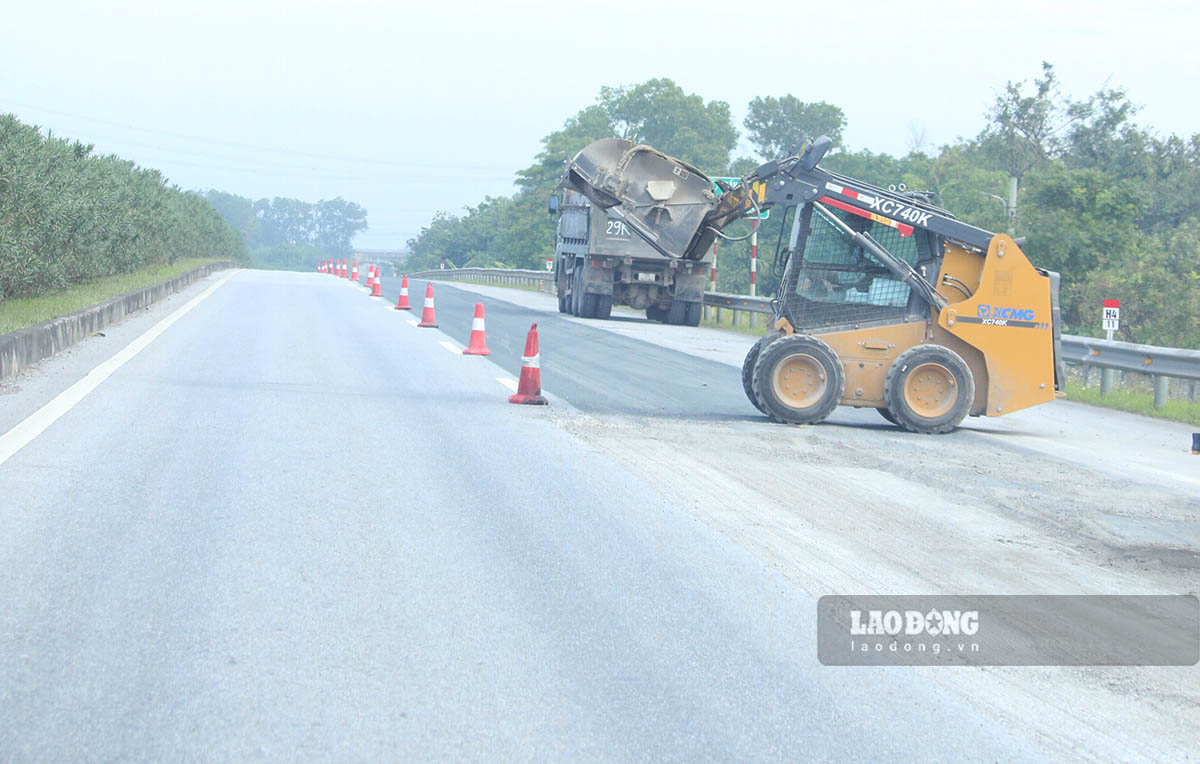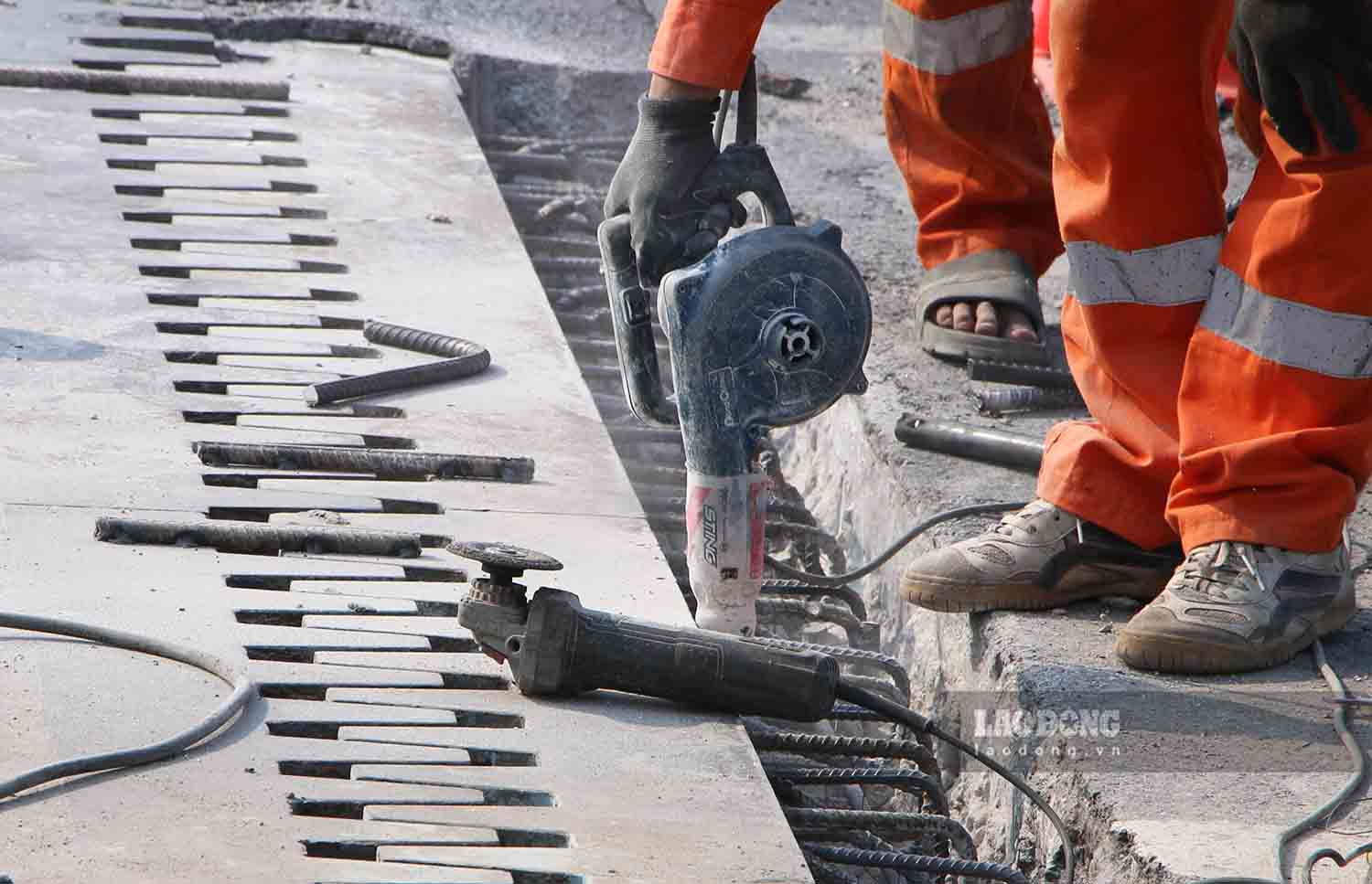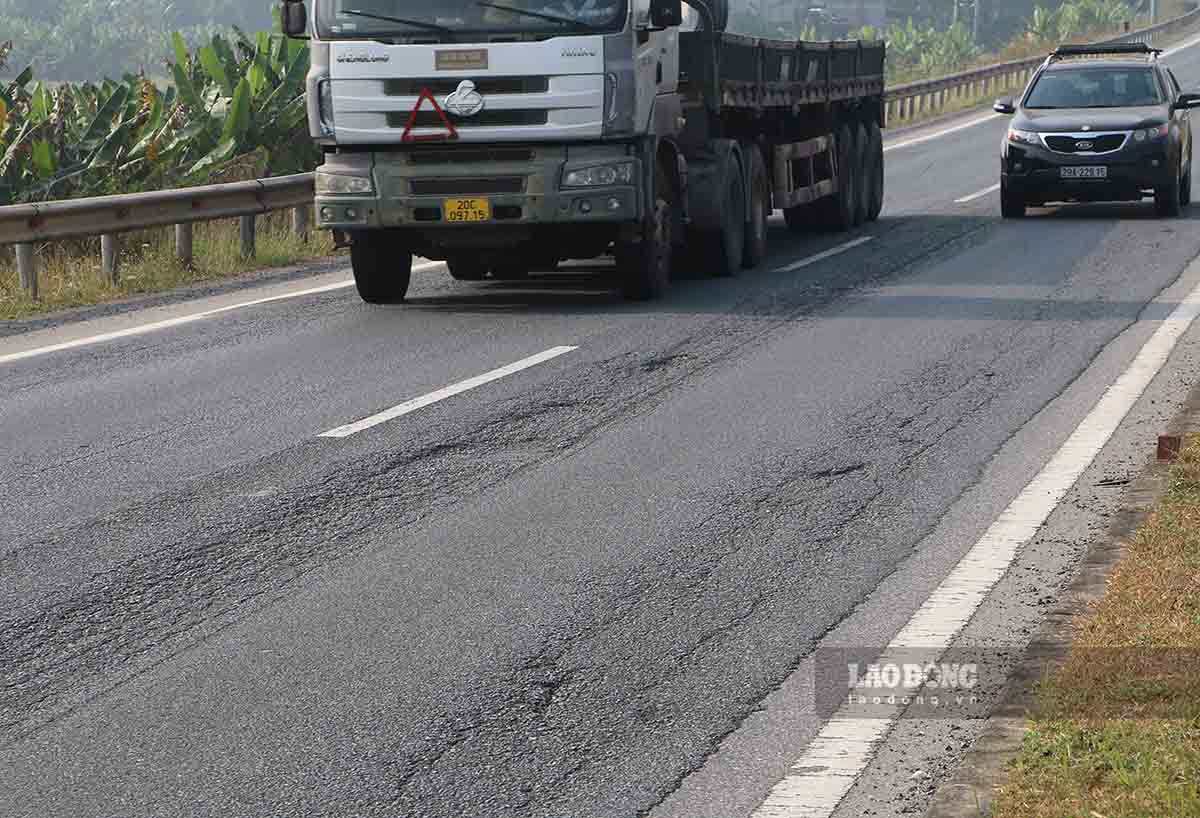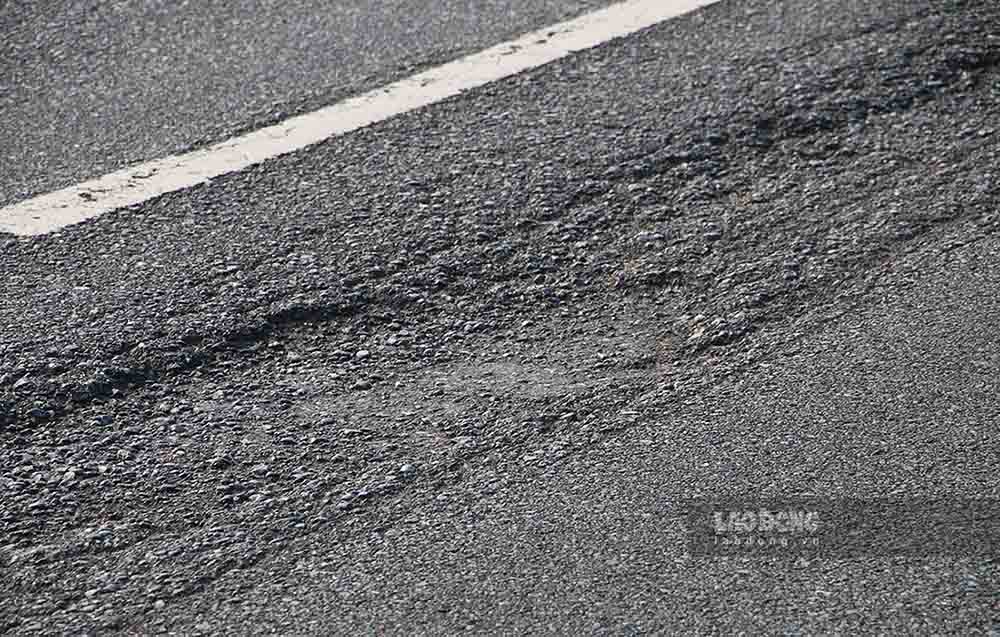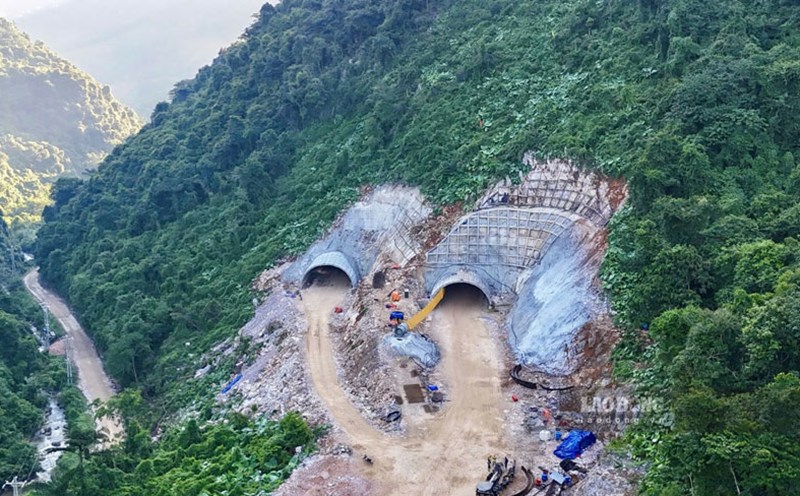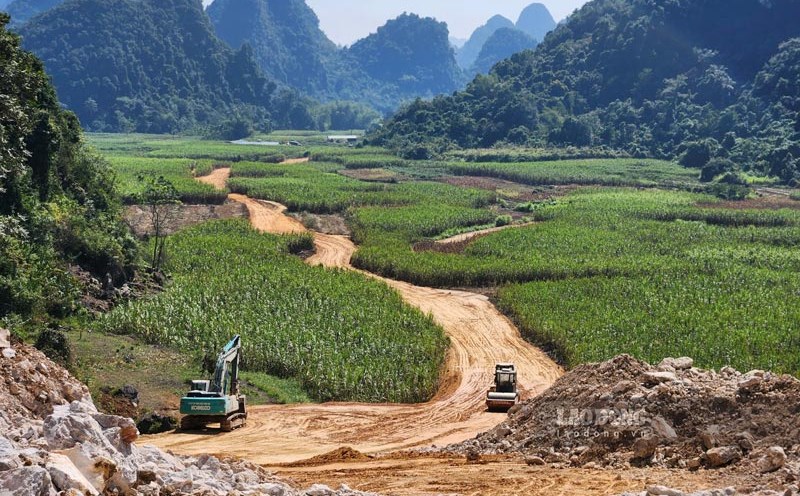Hanoi - Thai Nguyen Expressway officially opened to traffic in January 2014. With a total length of 64 km, at that time, this was the longest expressway in Vietnam.
After 10 years of operation, the Hanoi - Thai Nguyen expressway and 11 sections of the expressway owned and directly managed and operated by the State will begin to collect tolls, expected to begin in early 2025.
As of November 2024, many damaged sections and safety works on the entire Hanoi - Thai Nguyen expressway are being repaired and replaced.
The sunken and peeling road surfaces have been scraped and resurfaced with asphalt concrete. Workers are repairing expansion joints on some bridges. Construction is expected to be completed in December 2024.
However, the repair of damaged road surfaces is only carried out in a "patchwork" manner, leading to patchwork appearing along the entire route.
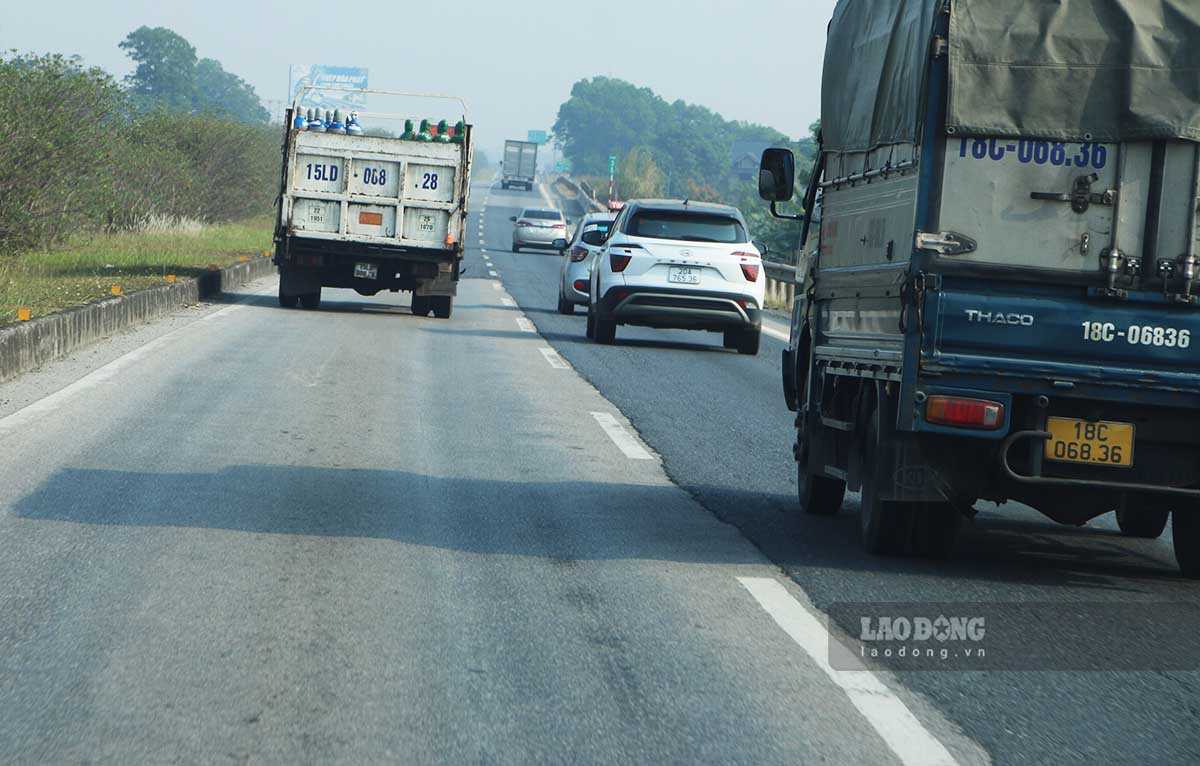
The road surface quality from the Soc Son - Bac Phu intersection to the end of the route is quite poor, with cracks and ruts appearing frequently. Meanwhile, this section often has a high traffic density, with a maximum permitted speed of 90 km/h.
Mr. Tran Le Hung (Bac Ninh) said that the road surface is rough in many sections, even with large ruts, which is very dangerous when traveling at high speed. Accidents on the route are also quite common.
"I think the fee is reasonable, but we need to improve quality, ensure better traffic safety, and have a plan to strictly control the load," Mr. Hung suggested.
The Hanoi - Thai Nguyen Expressway has a total investment of more than 10,000 billion VND from ODA loans and domestic counterpart funds. Since its inauguration, this expressway has not collected tolls.
The new Road Law, which will take effect from January 1, 2025, stipulates that tolls will be collected on state-invested highways. Management agencies are calculating toll rates to ensure the interests of the people are balanced.
According to Mr. Nguyen Van Thanh - former Chairman of the Vietnam Automobile Transport Association, collecting fees on highways invested by the State is appropriate.
"These routes are invested from people's taxes, so the toll fee needs to be reduced by at least 30% compared to the toll fee at existing BOT stations to reduce the cost burden for vehicle owners, and on the other hand, contribute to stabilizing transportation activities," Mr. Thanh commented.
Some recorded images:
